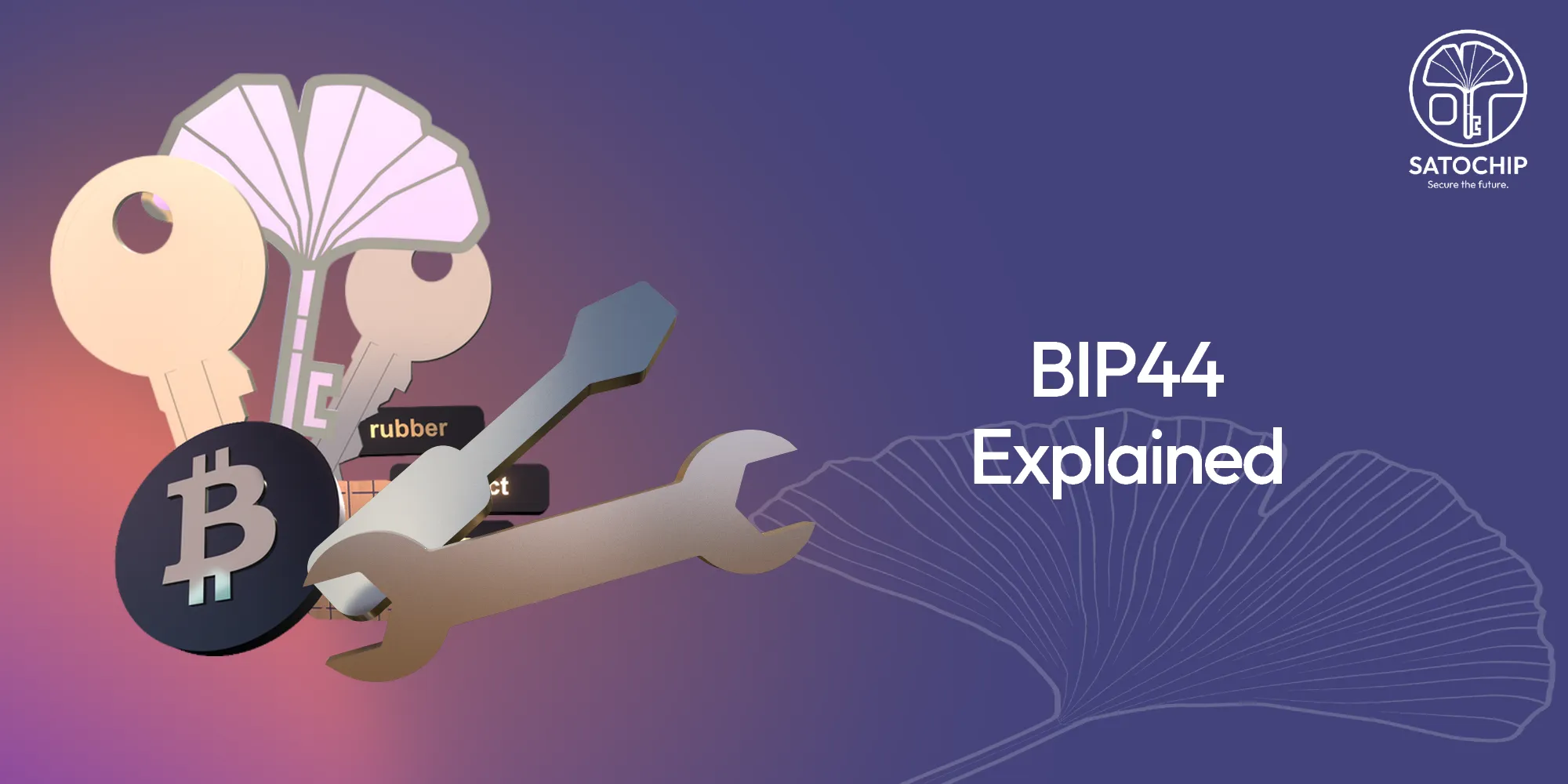What is the BIP44?

Bitcoin Improvement Proposal #44 – BIP44
Introduction
Today, we’ll be continuing our focus about Bitcoin Improvement Proposal (BIP) and how they really improve the Bitcoin protocol. Following on from our articles about BIP32 🔗 and BIP39 🔗, we will now turn our attention to BIP44.
As the BIP44 update follows the first two, we advise you to read our previous article about BIP32 and BIP39 before tackling this one. By doing so, you will have all the information you need to understand today’ subject.
What’s the BIP44 update?
BIP44 is an improvement on BIP32, which introduced the concept of HD wallets, but still lacked flexibility when it came to creating and managing bitcoin addresses.
BIP44 lets you create multiple accounts and addresses using the same seedphrase. A single crypto wallet can therefore hold several differents accounts, just as your physical wallet can hold several credit cards.
BIP44 and the derivation paths
The method adopted by the BIP44 🔗consists in creating derivation paths to organize your accounts and addresses within your porfolio. Each derivation in your portfolio is generated via a « master » private key which is used to create « children’s adresses ».
This derivation path is written as follows :
M/44’/0’/0’/1/5
At first, it’s not obvious what information this sequence of numbers refers to. Fortunately, nothing too complex :
M => this is the root of your HD wallet
44’ => indicates that the wallet is compatible with the BIP44 update
0’ => this number corresponds to the type of cryptocurrency relative to the corresponding address. For Bitcoin, this number is « 0 ».
0’ => this second zero indicates the wallet account number. 0 is for the first account created but this number will go up with every new account created within a particular wallet.
1 => This number determines wheter the address is external of internal. It could be 1 like, and be an external address (to receive funds) or 0 which indicates a internal (change) address.
5 => this number refers to the individual addresses generated under each account. In our exemple, the number « 5 » indicates that this is the sixth addresses generated in this particular account (since the numeration began at 0).
Standard and reinforced derivations
If you’re observant, you’ll have noticed that some of the derivation are followed by an apostrophe. This apostrophe means that we’re dealing with an « hardened » derivation. The derivations that aren’t followed by an apostrophe are « standards » one.
The hardened derivations are generated by using the master private key, when the standards ones are generated from the master public key. Using hardened derivations means that someone can’t guess the keys from the parent path.
One of the major advantages of BIP44 is the interoperability between different wallet solutions. For example, let’s say you’re using a Ledger hardware wallet and you want to transfer your wallet and cryptos to your Satochip🔗. Thanks to BIP44, importing your seed will enable you to retrieve all your accounts and addresses in a single operation. Simplicity itself!


